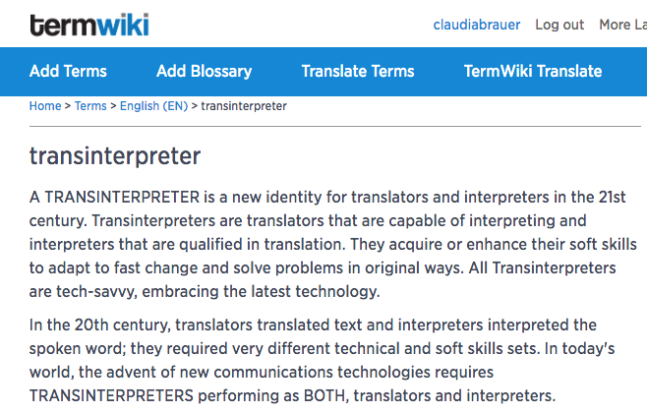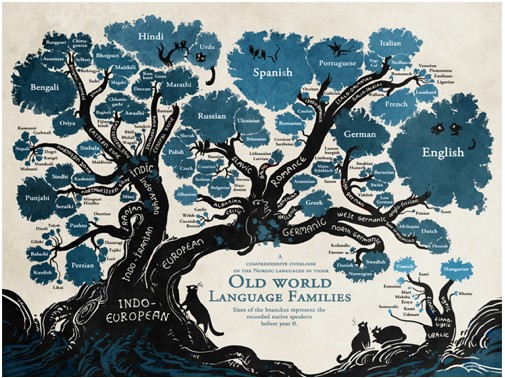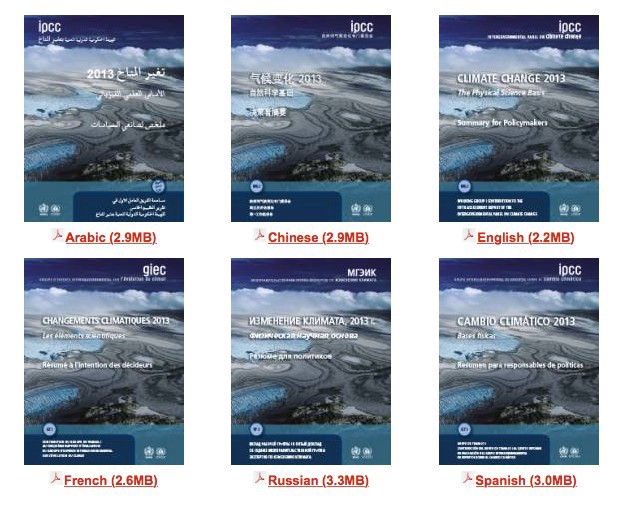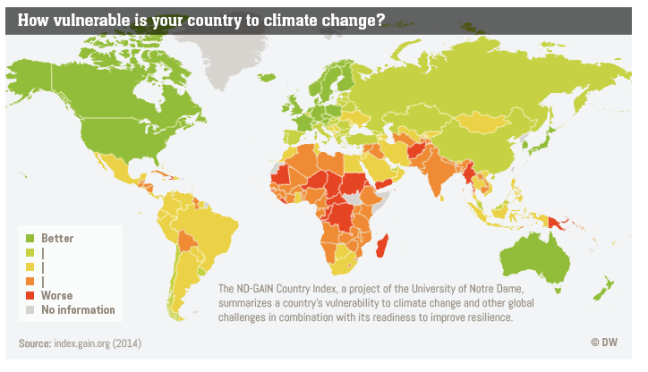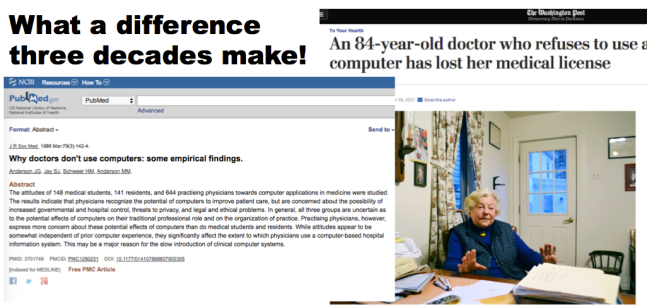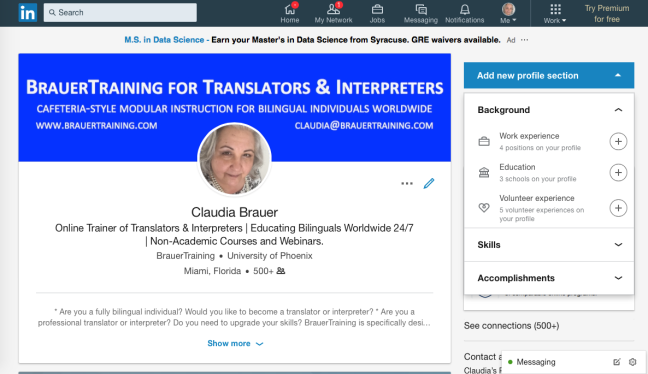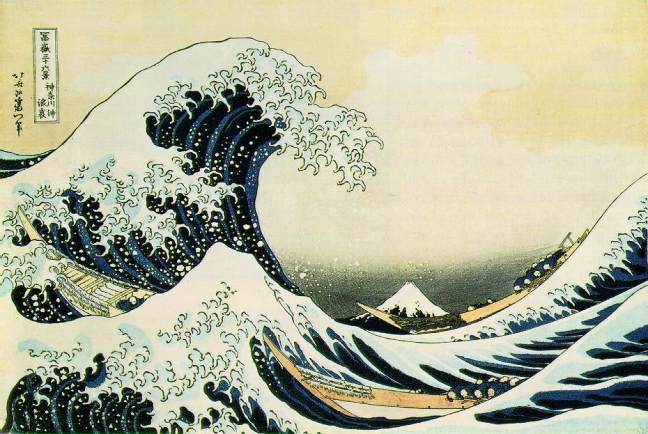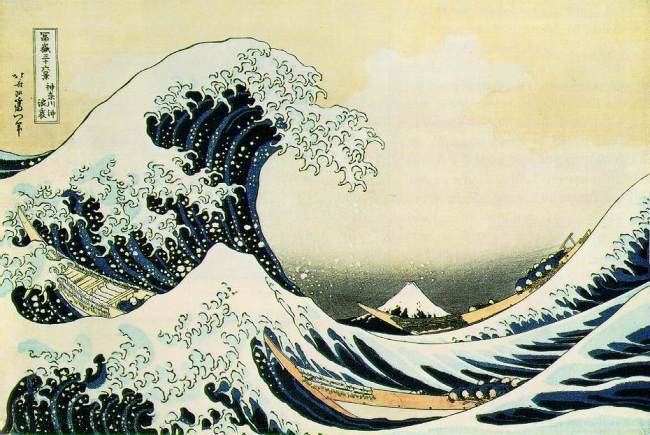
19th Century Image: “Tsunami” by Katsushika Hokusai (葛飾北斎)
BrauerTraining Newsletter # 1
June 2013
(Subscribe to our newsletter! goo.gl/AAX5K)

The world’s first pocket calculator.
The Abacus was developed around 2000 BC. It took humans some four thousand years to create electronic calculators, which appeared in the 60’s (see above). It then took just 10 years to develop and popularize a pocket-size device. Today, calculators are integrated as part of computers, PDAs and smartphones.
by
Claudia Brauer
I will open our first newsletter with a quote from Carl Sagan, a scientist and author who has deeply influenced my vision of the world:
“I do not think it irresponsible to portray even the direst futures. If we are to avoid them we must understand that they are possible. Where are the alternatives? Where are the dreams that motivate and inspire? We long for realistic maps of a world we can be proud to give to our children. Where are the cartographers of human purpose? Where are the visions of hopeful futures of technology as a tool for human betterment and not a gun on hair trigger pointed at our heads?”
― Carl Sagan, Pale Blue Dot: A Vision of the Human Future in Space
I have also decided that our first topic needs to be one of the most controversial subjects in the translation and interpreting industry today: Machine Translation. Shying away from the discussion will not resolve the issue of our survival as a viable profession in a future progressively driven into technology. I believe we have to stop seeing technology as our enemy and rather start embracing it, working with it, influencing its development, becoming co-creators of the tools we will be using in the next decades.
If we want to avoid a dire future as professional translators and interpreters, we must understand that such future death by inaction is possible and then set out to create the alternatives.
We must become the new cartographers of our future purpose in the industry. We have to make sure we remain relevant. That we are seen as useful and essential. There are segments of the industry that clearly think we are replaceable. What are we doing to show them otherwise? Staying in our comfort zones will not solve the dilemma.
We cannot continue hiding in the sand and think that just because we do not want it, it will not happen. Rather, we must face the scary challenge posed by progress and run to catch up for the decades we have been complacent while the rest of the industry became digital, mobile and instant.
A pale blue dot

(Above) Earth: A pale blue dot in the immensity of space
In 1990, at the request of Carl Sagan, NASA commanded the Voyager 1 spacecraft to take a photograph of Earth from a record distance of about 3,700,000,000 miles. The resulting photograph was titled the “Pale Blue Dot” because earth is shown as a tiny little dot against the immensity of space.
We, professional translators and interpreters, are but a pale blue dot in the sea of information that needs to be communicated in multiple languages worldwide. We can only control our own response to the sea of change.
It still is the survival of the fittest.

Kaijo no Fuji (Tsunami, or The Big Wave) by Japanese painter Katsushika Hokusai
Language & Translation Automation Conference (LTAC) – Proceedings
Recommendation # 1:
Download these proceedings for free at http://goo.gl/zlDFf and read them!
This is an eBook in pdf format that collects the 2011 discussion by “some of the most prominent experts from academia and the language industry worldwide [who] met in the Great Hall of the LUSPIO University in Rome, under the auspices of the Faculty of Interpreting and Translation and the Directorate-General… ” for the European Master’s in Translation (EMT).
This Language and Translation Automation Conference (LTAC) “was convened with the goal of gathering the most innovative ideas and initiatives on language automation, translation technology and terminology, with an emphasis on controlled languages and controlled authoring in academia and in the language industry.”
I have not finished reading the document yet, but still I recommend you all start reading it too. It is a very good window into the present of the translation industry. It collects some important thoughts and visions for what I call our potential future (if we survive as a professional species). It also explains in layman’s terms some of the obscure aspects of Machine Translation.
Ignorantia legis neminem excusat (ignorance of the law excuses no one). Ignorance of MT is no excuse for you (to ignore the developments happening in the Language Services world).
Step # 1 in your learning curve, therefore, is to learn about the tools you will need to remain relevant in the professional world of tomorrow!
(The picture selected by the authors for the cover, “…describes the modern conflict between the forces of nature and the fragility of man. For us it meant the desire to ride exceptional forces, to win the awe they bring, and draw energy and strength.”
Valeria Cannavina & Anna Fellet)
So…. is Google Translate
“THAT” bad?
“Of course!” cry the Translators and Interpreters.
“Actually it is pretty good,” says my american friend working in China, who uses it to get “the gist” of many documents of possible interest to her, written either in Mandarin or any of a couple of dozen dialects. “I use it at least 10 times a day….and it really helps me out to understand what the general content is about.”
“I use it all the time,” says my relative, a top executive at an international logistics company in the port of Miami, one of the busiest in the USA. “We all use Google Translate all day, to know if we are dealing with invoices or purchase orders, to see if it is a request for us to make a shipment or to receive a shipment… I just need to know more-or-less what the words say… I do not need full-text, perfect translations… I understand many terms are wrong, but I really do not care… I do not have the time or the money to pay for a translator… when I really need something important translated, then I send it out, and accept the wait and pay the price. But that is not very often.”
Welcome to the 21st Century. The “gist” and “understand more-or-less what it says” are the rule for the masses. We are increasing quality control in industries such as healthcare and legal. We are having the fight of our lives to at least hold these two industries to a high standard. We are dealing here with lives of people “on the spot”. Quality is of the essence here.
But for most people in the masses, a “kind-of” translation is good enough.
So, another suggestion, if you want to get the “gist” of what Machine Translation is, head on to the vilified Wikipedia (I actually use when I need to get the “gist” of a topic… sounds familiar?)
http://goo.gl/63LSp – Why not dedicate a little time to educate yourself?

(Above) Josh Estelle a Google Translate engineering leader
A recent article published in CNET News by Stepehen Shankland (http://goo.gl/d8zZh) conveys the reality of Google Translate (vs. what some translators would like it to be):
“Google Translate provides a billion translations a day for 200 million users…”
One thousand million translations a day!
That surely is mainstream.
Two hundred million users!
That surely is mainstream.
“The amount of text Google translates daily is more than what’s in a million books, and surpasses what professional translators handle in a full year,” stated Josh Estelle, a Google Translate engineering leader.
He also noted that 92% of usage is outside the United States (that may explain why translators and interpreters in the USA have such a limited view of how extensive its use is in other parts of the world).
The internet is “expanding gradually to other languages, helped in part by technological change … [since] 2008, Google launched the ability to translate any language to any other language,” stated Estelle.
Google Translate is currently working on better quality for Machine Translation as well as ubiquity: “No matter where you are, you should have access to a translation.”
They are also working on real-time multi language communication:
“We want you to be able to translate things instantly,” from and into any language, said Shankland.
So, translators and interpreters….how are WE adapting to this change in the marketplace?
What do we offer today that is a value-added to what people get with Google translate?
How are we marketing such value-added?
How are we differentiating ourselves from Machine Translation and the likes of it?
In a market where everyone (including you, dear reader) likes to save a buck or two,
think about how you are going to face the ever-expanding competition of the likes of Google Translate (yes, there are many), in the next five years.
I believe that just as a potential Fourth Wave of democratization is brewing worldwide, so too there is a Huge Wave of changes related to the democratization of translation and interpreting.
Those in the profession who fail to see this wave may very well perish under its weigh.
Others will learn to ride it.
Others will harness its power.
Claudia Brauer








